Jungle hermit: how the archaic cassowary bird lives (6 photos)
This Australian resident has an irritable character and is able to digest nails. 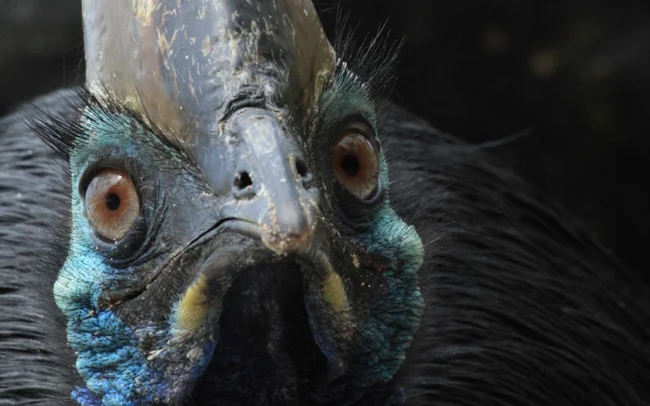
In the tropical forest of Australia, under the canopy of tall trees, a strange creature lives. It's black and shiny, with a fancy helmet cap and a bright red neck. At first he looks affectionately and slyly, but suddenly he suddenly emits a battle cry and, spreading his wing-like legs with long claws at the ends, desperately rushes into the fight, sniffling and jumping as he does so.
This is the cassowary (Casuarius) - the most archaic bird of the continent. She is not an ordinary flying and keel-breasted bird, but a ground-dwelling one - flat-chested, and remained on the earth as an atavism, due to the remoteness of her homeland - Australia and New Guinea - from civilization. 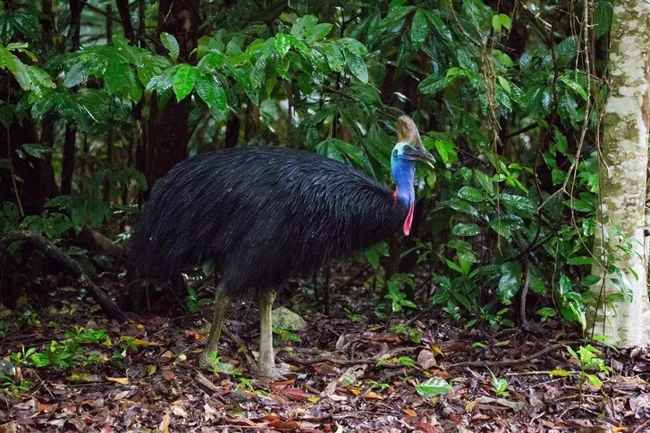
Having switched to forest life, the cassowary gradually lost the ability to fly, its wings atrophied, its tail feathers disappeared, and the bone keel that appeared on its chest is the remains of flight muscles. But his legs, which bear the main load during all movements, have become strong and powerful so much that he can easily jump 1.5 m in length, flying over streams. On one of the three clawed fingers there is a special claw-spike up to 10 cm long, which serves as a means of attack when meeting with any living representative of the surrounding world
In fact, it is an ostrich, the same as the Australian emu, to which it is a distant relative. Like all ostriches, it does not have the characteristic hooks on the feather fibers of flying birds, which make them dense and impenetrable to air. Its plumage is loose, long and soft, dark, almost black in places.
Due to the hermit lifestyle in the tropical thickets, the cassowary has developed a very difficult, irritable character. At the sight of strangers, he immediately becomes excited and resolutely attacks even an enemy superior in size and strength. At the same time, he works very intensively with both his powerful legs and wings. The cassowary's wings have undeveloped flight feathers with five long, barbed claws at the ends (a legacy of Archeopteryx). 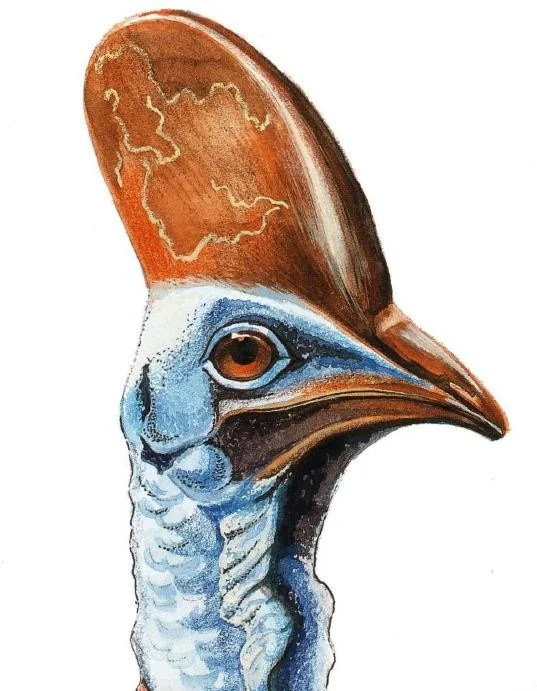
The helmeted cassowary reaches a height of up to 1.5 m (at the withers up to 90 cm). On the head is a helmet, the back of the neck is bright red with two earrings. Lives in the forests of Queensland (Australia) and New Guinea 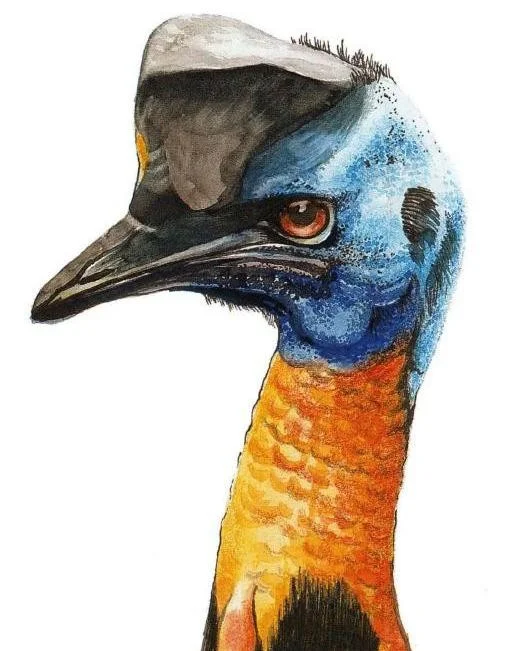
Orange-necked, or golden - up to a meter tall, with a helmet thickened at the back, with a red earring in the middle of the orange neck and two at the beak. Lives in New Guinea and Northern Australia
Cassowaries live in humid forests. With a high horny crest-helmet on the head with a spongy internal structure, they not only push aside dense thickets of undergrowth, but also protect themselves from falling tropical fruits, as well as during skirmishes among themselves. Interestingly, the chicks do not have this ridge; it grows gradually, layer by layer. The helmet becomes so fused with the bird’s skull that it remains on it even after death, on already decayed bones. 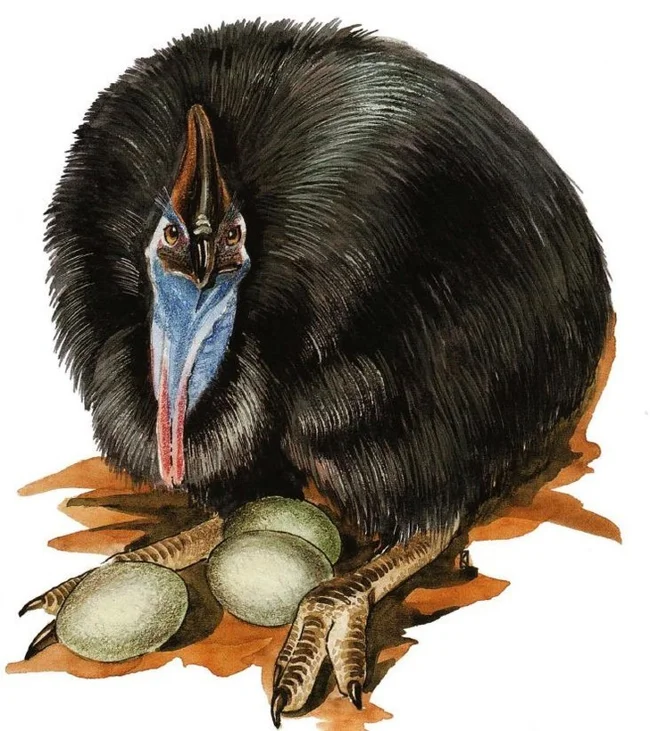
The male takes on all the troubles of incubating the eggs and raising the offspring. He prepares the nest, lining it with grass and fern leaves. There the female lays 4-6 large (600-700 g each) bottle-glass colored eggs that can support a person’s weight up to 60-70 kg. After this, the females, although they help their spouses, devote most of their time to restoring their health, eating heavily and resting
Cassowaries feed on fruits that have fallen to the ground, insects, small lizards, other people's chicks and even eggs. The stomach of this bird digests everything, from the peel of such fruits that no knife can take, and the horny integument of animals, to... nails. Her main gastronomic principle: “Don’t pass by!” They are all solitary hermits, measuring their miles with heavy steps. They have good eyesight and acute hearing, so getting close to them is not at all easy. But during the mating season, their attention becomes dull as they are busy with each other. 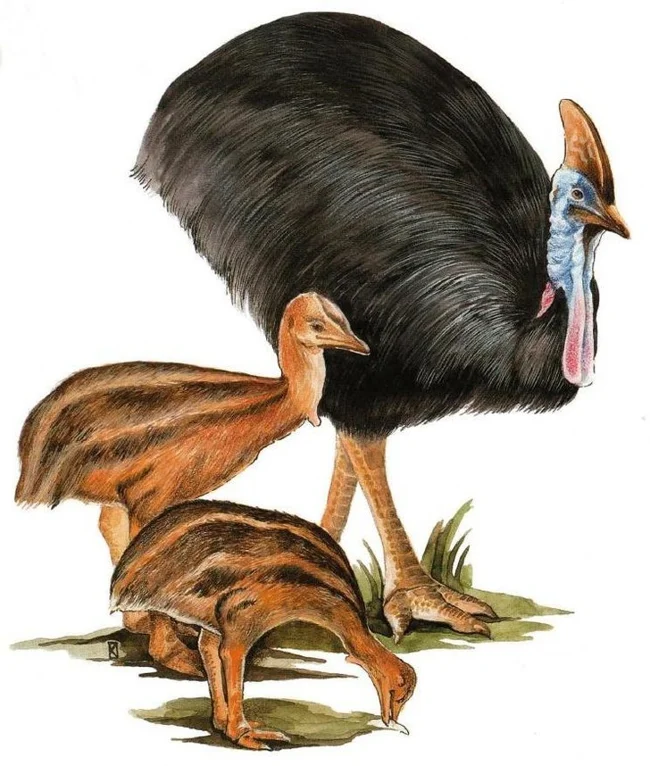
After 56-58 days, the chicks are born synchronously, almost at the same time. These are yellowish-brown lumps with dark longitudinal stripes and a short neck, more like bipedal hedgehogs than their parents. They acquire bright colors only upon reaching puberty.
Papuans, without contacting adult birds, willingly catch babies and raise them at home. From the claws of their feet the natives make tips for spears, and from the spines of their wings they make thin needles, up to 10 cm long, with which they sew and mend their clothes. In the villages of New Guinea, you can see young cassowaries walking along the streets along the huts, and often even playing with children. For such a handsome man, a Papuan can get 8 pigs or, giving him as payment for his wife, can get married. So a peasant who raises a cassowary becomes a rich man and a respected person in the village. And zoos around the world pay thousands of dollars for one such bird.
